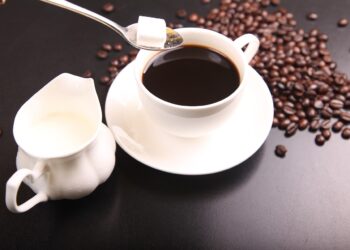Mastering the Art of Coffee Brewing: Secrets for a Perfect Cup
Coffee, often referred to as the elixir of productivity, is a staple in many people’s daily routines. Mastering the art of coffee brewing can transform your morning cup from a mere caffeine source to a truly delightful experience. In this guide, we’ll explore essential techniques, tools, and secrets to help you brew the perfect cup of coffee every time.
Understanding Coffee Beans
The journey to a perfect cup of coffee begins with the beans. Coffee beans come in numerous varieties, each with unique characteristics and flavor profiles. Knowing the differences between these can significantly affect the brewing outcome.
Arabica vs. Robusta
Arabica beans are popular for their sweet, soft taste and higher acidity, while Robusta beans are more robust and have a stronger, harsher taste, with a peanutty aftertaste. Choosing the right kind of bean is the first step in tailoring your coffee to your palate.
Single-Origin vs. Blends
Single-origin coffee is sourced from one specific location, offering distinct flavors and aromas. Blends, however, mix beans from various locations, creating a balanced and consistent taste. Depending on your preference for complexity or consistency, you might choose one over the other.
Choosing the Right Equipment
Your choice of equipment significantly impacts the quality of your coffee. From automatic drip coffee makers to manual espresso makers, each tool provides different benefits and affects the brewing method and taste.
Drip Coffee Makers
Great for simplicity and convenience, drip coffee makers are ideal for those who prefer a clean and clear cup of coffee. They work best with a medium grind.
French Press
The French press is renowned for its robust flavor and rich mouthfeel. It requires a coarse grind and a brewing time of about four minutes to extract the full flavor from the beans.
Espresso Machines
For those who like strong, rich coffee, an espresso machine is a must-have. It requires a fine grind and precision in tamping and timing to achieve the perfect shot.
Mastering the Grind
The grind size of your coffee beans affects the surface area exposed to water, which influences the extraction rate. Different brewing methods require different grind sizes.
Fine Grind
Used primarily for espresso, a fine grind looks like salt or sugar. It allows for quick extraction under high pressure, which is essential for a good espresso.
Medium Grind
Ideal for drip coffee makers and siphon brewers, a medium grind has a texture similar to sand.
Coarse Grind
This grind is best suited for French presses and cold brew systems. A coarse grind looks like chunky sea salt.
Optimizing Brewing Parameters
The three main parameters to consider when brewing coffee are water temperature, brewing time, and the coffee-to-water ratio. Balancing these elements is the key to extracting the best flavor from the beans.
Water Temperature
The ideal temperature for brewing most coffee is between 195°F to 205°F. Temperatures too high can extract unpleasant flavors, while too low may lead to under-extraction.
Brewing Time
Brewing time varies depending on the method. Espresso generally takes about 20-30 seconds, while French press coffee takes about 4 minutes.
Coffee-to-Water Ratio
A general guideline is about 1 to 2 tablespoons of coffee per 6 ounces of water, but this can be adjusted based on personal taste preferences.
Frequently Asked Questions (FAQs)
How long do coffee beans stay fresh?
Whole coffee beans maintain peak freshness for about two weeks after roasting, while ground coffee deteriorates faster. Keeping beans in airtight, opaque containers can extend their shelf life.
Is filtered water important for brewing coffee?
Yes, using filtered or bottled water can prevent unwanted tastes and odors from affecting the quality of your coffee.
Can the quality of coffee vary based on its origin?
Yes, the soil, climate, and altitude where coffee is grown can all influence its taste and character.
Conclusion
Mastering the perfect cup of coffee is a blend of science and personal preference. By understanding your beans, selecting the right equipment, and fine-tuning your brewing parameters, you can enhance your daily coffee routine significantly. Experiment with different methods and ratios to find your ideal cup and savor the rich, complex world of coffee at its finest.
With these tips and insights, you’re well on your way to becoming a skilled coffee brewer, capable of crafting exceptional coffee experiences every day.





